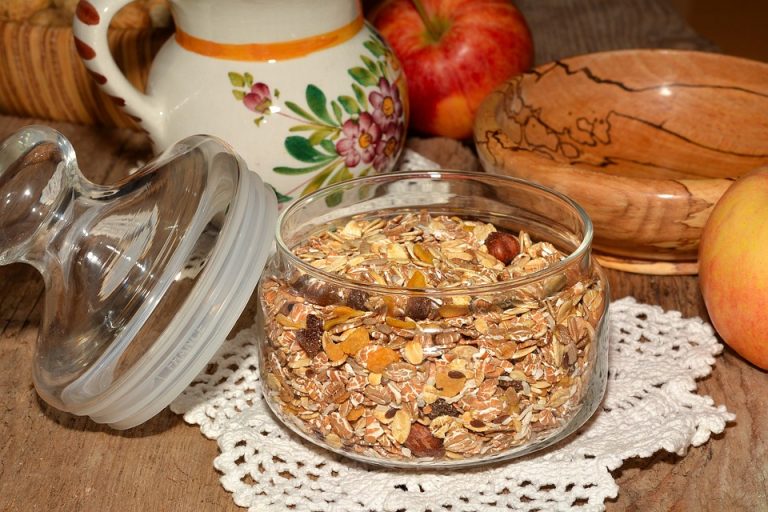Cinnamon and A1C levels matter because they tell a simple story: what your blood sugar has been doing for months. Cinnamon is a spice, yes, but it’s also a powerful tool that can influence how your body handles glucose. If you live with high A1C, the thought of a pantry staple helping you is both hopeful and practical — and that’s exactly why this matters to you.
Contents
- Cinnamon and A1C Levels: How A Spice Becomes Medicine
- 1. Cinnamon Slows Carbohydrate Digestion
- 2. Cinnamon Helps Cells Use Insulin Better
- 3. Cinnamon Reduces Fasting Blood Sugar
- 4. Cinnamon Lowers Post-Meal Spikes
- 5. Cinnamon Has Anti-Inflammatory Benefits
- 6. Cinnamon Encourages Better Eating Habits
- 7. Cinnamon Works Well With Medication And Lifestyle Plans
- How Much Cinnamon Should You Use?
- What the Research Actually Says
- Safety, Quality, And Practical Use
- Putting This Into Your Life: Simple Strategies
- Stories That Stay With Me
- How To Track Progress
- Bottom Line
- FAQ
Cinnamon and A1C Levels: How A Spice Becomes Medicine
You don’t need a lab coat to understand this. When we talk about cinnamon and A1C levels, we’re talking about one clear goal: lowering the long-term average of your blood sugar. That number shows you what your body has been doing for about three months. A drop of even a half point can change medication plans, reduce complications, and give you back some control.
I’ve watched people change their lives when they add small, smart habits. Cinnamon is one habit that stacks well with diet, exercise, and medication. But it’s not magic. It’s evidence-based help you can use every day.
1. Cinnamon Slows Carbohydrate Digestion
Cinnamon works in your gut. It can slow down the enzymes that break down carbohydrates, which means sugar creeps into your bloodstream more slowly after meals. That gentler rise keeps your pancreas from overreacting and helps avoid high spikes — the kind that pull your A1C upward over months.
Try sprinkling a little cinnamon on oatmeal or yogurt. Small swaps add up. A steady routine beats dramatic fixes.
2. Cinnamon Helps Cells Use Insulin Better
One of the clearest ways cinnamon and A1C levels connect is through insulin sensitivity. Cinnamon contains compounds that help cells listen to insulin more effectively. When cells take up glucose more readily, less sugar floats in your blood — and your A1C benefits.
Clinical researchers explain this effect, and some trials show meaningful improvements. It’s not universal, but when cinnamon is combined with lifestyle changes, the impact becomes more obvious.
3. Cinnamon Reduces Fasting Blood Sugar
Fasting glucose is the sugar number you see when your body is at rest. Cinnamon can help lower that morning number. Regular, modest use may translate into better A1C readings because fasting values weigh heavily in the A1C calculation.
Make cinnamon part of your bedtime routine: add it to a warm cup of unsweetened milk alternative, or to high-fiber evening snacks. Consistency matters more than quantity.
4. Cinnamon Lowers Post-Meal Spikes
Post-meal spikes are sneaky. They don’t always show up on a single glucose reading, but they raise your A1C. Cinnamon helps blunt those peaks, especially when paired with fiber and protein. This combination flattens the glucose curve, and your A1C will thank you.
Add a sprinkle to your fruit, coffee, or smoothies. These tiny rituals reduce the damage done by every meal, day after day.
5. Cinnamon Has Anti-Inflammatory Benefits
Inflammation coldly sabotages glucose control. Cinnamon carries anti-inflammatory compounds that quiet chronic inflammation. When inflammation eases, insulin signaling improves, which nudges A1C down over time.
You get a two-for-one: flavor and function. And that’s a powerful motivator to keep it on your shelf.
6. Cinnamon Encourages Better Eating Habits
Here’s a practical truth: cinnamon makes healthy food taste more indulgent. That matters. When your oats, yogurt, or roasted vegetables taste richer, you’re more likely to choose them over sugary treats. Those habitual swaps lower your average blood sugar.
Cinnamon becomes a behavioral nudge that supports better choices — and better A1C readings follow.
7. Cinnamon Works Well With Medication And Lifestyle Plans
This isn’t about replacing medication. It’s about complementing it. Studies suggest that cinnamon and A1C levels improve more when cinnamon is used alongside standard treatments: proper diet, exercise, and prescribed medicines. Think of cinnamon as a partner at the table, not a rival.
Always talk to your clinician before changing doses. Cinnamon can be a subtle but effective teammate in a comprehensive plan.
How Much Cinnamon Should You Use?
The safe, sensible answer: small, regular amounts. Most studies showing benefit used about a half to one teaspoon per day of common cassia cinnamon. Ceylon cinnamon has different compound levels and is often recommended if you use larger amounts.
Don’t binge on sticks of cinnamon or concentrated extracts without medical oversight. A little goes a long way, especially when it becomes part of daily habits.
What the Research Actually Says
Not every trial finds the same result. Some larger reviews and randomized trials show modest reductions in A1C with cinnamon supplementation. Others find smaller or mixed effects. The best evidence points toward benefit when cinnamon is added to a well-rounded treatment plan.
Scientists publish these findings in respected journals, and institutions like the National Institutes of Health report on the mechanisms behind cinnamon’s action. That’s not anecdote — that’s biology, tested in people.
Safety, Quality, And Practical Use
Cinnamon is safe for most people at culinary doses. But at high doses, especially of cassia cinnamon, a compound called coumarin can stress the liver. If you take medications that affect the liver or blood sugar, check with your provider.
Buy quality cinnamon. Look for labeled Ceylon if you plan to use more. Use it as a flavor enhancer and part of a balanced plate — whole grains, lean protein, healthy fats, and plenty of vegetables.
Putting This Into Your Life: Simple Strategies
- Start your day with a sprinkle on oatmeal and fruit.
- Add cinnamon to coffee, smoothies, or homemade granola.
- Roast vegetables with cinnamon, paprika, and olive oil for a savory twist.
- Mix cinnamon into Greek yogurt with nuts for a protein-rich snack.
These little shifts become big over time. Your body remembers the cumulative effect.
Stories That Stay With Me
I’ve met people who lowered their A1C by adjusting diet, moving more, watching stress — and yes, by adding cinnamon to daily meals. One woman traded dessert for spiced fruit and watched her doctor cut her medication after months. That’s not fairy tale. It’s practical, persistent work.
When you respect a small change enough to repeat it, you get results.
How To Track Progress
Measure your A1C as your clinician recommends. Use a glucometer or continuous monitor to watch daily patterns. When you start a cinnamon practice, note how your fasting and post-meal numbers respond over weeks. The evidence is in the trend lines, not single days.
If you’re on medication, keep your team in the loop so adjustments are safe and effective.
Bottom Line
Cinnamon and A1C levels can be linked in practical, meaningful ways. Cinnamon slows digestion, improves insulin sensitivity, reduces fasting and post-meal spikes, calms inflammation, encourages healthier eating, and complements medical treatment. Use small, consistent amounts, choose quality products, and coordinate with your healthcare provider. This spice won’t replace your prescriptions, but it can be a quiet, persuasive ally in the fight to lower A1C.
You don’t have to do everything at once. Start with one teaspoon a day, track your numbers, and adjust. A steady habit is better than a grand gesture.
FAQ
Is cinnamon safe for people with diabetes?
Yes, at culinary doses cinnamon is safe for most people with diabetes, but talk to your clinician if you take blood sugar–lowering medicines. High doses of cassia cinnamon contain coumarin, which can affect the liver, so moderation and medical oversight matter.
How long before cinnamon affects A1C levels?
A1C reflects roughly three months of blood sugar. If cinnamon is part of a consistent pattern, you may start to see changes in fasting glucose and post-meal readings within weeks, with A1C changes appearing after a few months.
Which type of cinnamon is best?
Ceylon cinnamon generally has lower coumarin levels and is preferred for regular use. Cassia cinnamon is common and flavorful but should be used more sparingly if you take large daily amounts.
Can I use cinnamon supplements instead of the spice?
Supplements vary in strength and purity. If you choose supplements, select reputable brands and discuss them with your provider. The culinary approach — cinnamon in foods — is simple, safe, and effective for many people.
References
The National Institutes of Health provides research on cinnamon’s effects on glucose metabolism and related mechanisms (http://www.nih.gov).
The National Library of Medicine hosts clinical trials and reviews about cinnamon and blood sugar, with detailed study results (https://www.ncbi.nlm.nih.gov).
The American Diabetes Association offers guidelines and articles about dietary strategies for lowering A1C, which include evidence-based discussions about spices like cinnamon (https://www.diabetes.org).
Bold words: you’ve got a plan. Small, steady choices lead to real change — and cinnamon can be a warm, helpful part of that plan.








